ASME B30.9-2021: Updates & Revisions to the ASME B30.9 Slings Standard
ASME B30.9 Slings sets the standard for the fabrication, attachment, use, inspection, testing, and maintenance in the load handling industry.
The American Society of Mechanical Engineers (ASME) is a professional association and leading international developer of codes and standards associated with the art, science, and practice of mechanical engineering. ASME membership is comprised of engineers, scientists, government officials, and others who voluntarily contribute their technical expertise.
Every couple of years, the B30 Committee reviews, revises, and amends their existing standards and releases a new edition, based on:
- Technological advances
- New Data
- Changing environmental and industry needs
In this article, we’ll discuss the revisions, updates, and additions to the newly released ASME B30.9-2021 Slings standard, compared to the previously released 2018 edition.
What is ASME B30.9-2021 Slings?
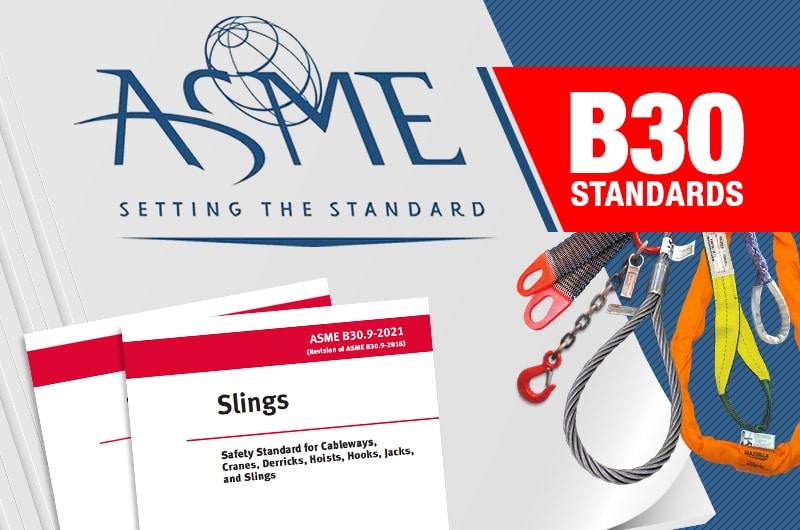
The first ASME B30.9 Slings standard was issued in 1996, and since then, has been revised and published by the B30 Committee in 2003, 2006, 2010, 2014, and 2018.
The new ASME B30.9 Slings standard revises and supersedes the procedures outlined in the 2018 edition of the same standard.
According to the standard itself,ASME B30.9-2021 Slings includes provisions that apply to the fabrication, attachment, use, inspection, testing, and maintenance of slings used for load-handling purposes, used in conjunction with equipment described in other volumes of the B30 Standard, except as restricted in ASME B30.12 Handling Loads Suspended From Rotorcraft and ASME B30.23 Personnel Lifting Systems.
Slings fabricated from alloy steel chain, wire rope, metal mesh, synthetic fiber rope, synthetic webbing, and polyester and high-performance fiber yarns in a cover(s) are addressed.
What’s New in ASME B30.9-2021 Slings?
One of the more notable changes to the ASME B30.9 Slings standard is the addition of a definition for an endless sling (alloy chain).
ASME B30.9 Slings defines an endless sling (alloy chain) as: “a chain sling made from one continuous length of alloy chain with both ends joined by a welded link or mechanical coupling link.”
Previously, the only endless sling that was defined was wire rope. In the 2018 update, ASME defined denier, high tenacity fiber, original language(s), shall, should, and tenacity. Also, they revised the definitions for design factor, endless sling (wire rope), grommet (wire rope), proof load, and service revised.
Chapter 1: Alloy Steel Chain Slings: Selection, Use, and Maintenance
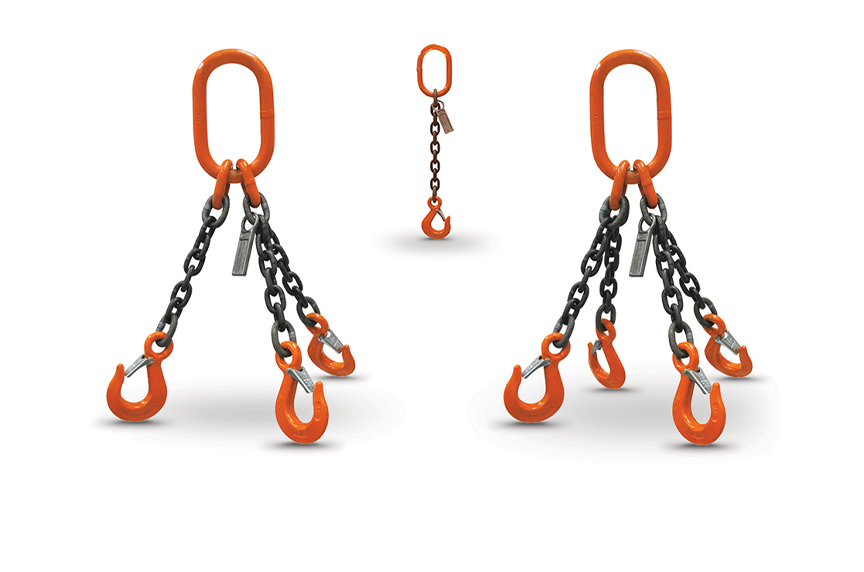
Section 9-1.0-1 (f)
For this section on alloy steel chain slings, ASME added an illustration for the endless sling configuration with a straight-line hitch.
Rigging Practices
In Section 9-1.10.4 (p) Rigging Practices, the following paragraph was added: “If a mechanical coupling link is used to join chain links in an endless sling, the link should not bear directly against the load, a hook, or other fitting.”
Chapter 2: Wire Rope Slings: Selection, Use, and Maintenance
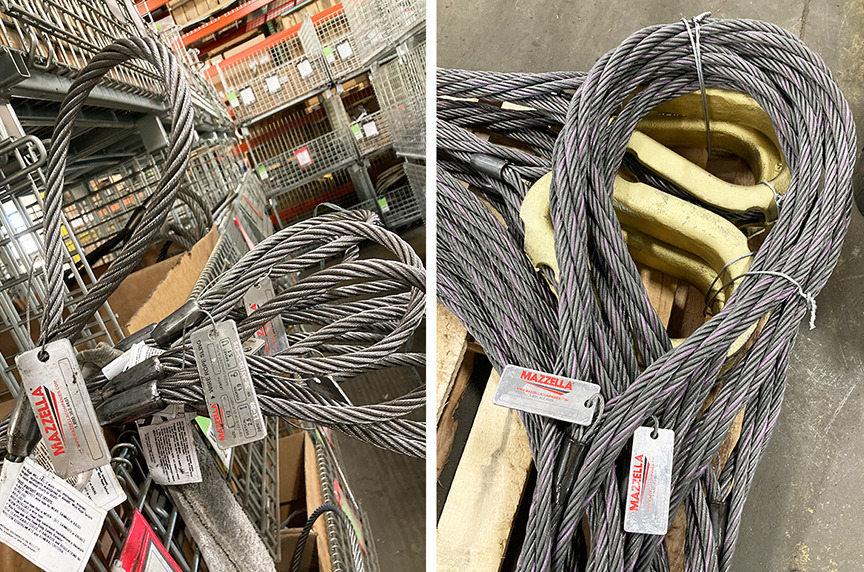
In Section 9-2.5: Rated Load, connection hardware shape and size were added to the list of factors that “shall be” included in the rated load of a lift.
Under the 9-2.6.1 General section, the following was added: “New wire rope slings incorporating previously used or welded fittings shall have the fittings proof tested before or after fabrication of the completed sling.”
Chapter 4: Synthetic Rope Slings: Selection, Use, and Maintenance
In Section 9-4.5: Rated Load, connection hardware shape and size were added to the list of factors that “shall be” included in the rated load of a lift.
Under the 9-4.6.1 General section, the following was added: “New synthetic fiber rope slings incorporating previously used or welded fittings shall have the fittings proof tested before or after fabrication of the completed sling.”
Chapter 5: Synthetic Webbing Slings: Selection, Use, and Maintenance
In Section 9-5.5: Rated Load, connection hardware shape and size were added to the list of factors that “shall be” included in the rated load of a lift.
Under the 9-5.6.1 General section, the following was added: “New synthetic webbing slings incorporating previously used or welded fittings shall have the fittings proof tested before or after fabrication of the completed sling.”
Chapter 6: Polyester Roundslings: Selection, Use, and Maintenance
In Section 9-6.5: Rated Load, connection hardware shape and size were added to the list of factors that “shall be” included in the rated load of a lift with polyester roundslings.
Chapter 7: High Performance Roundslings: Selection, Use, and Maintenance
In Section 9-7.5: Rated Load, connection hardware shape and size were added to the list of factors that “shall be” included in the rated load of a lift.
Under the 9-7.6.1 General section, the following was added: “New HP (high-performance) roundslings incorporating previously used or welded fittings shall have the fittings proof tested before or after fabrication of the completed sling.”
Nonmandatory Appendix A
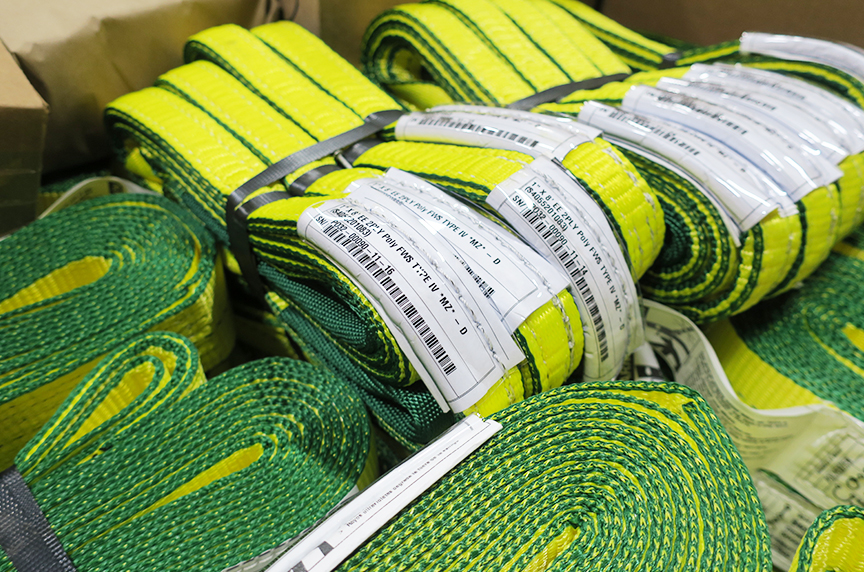
The Nonmandatory Appendix A focuses on Sling Protection. It includes subsections on the following:
- Precaution
- Considerations
- Guidance
- Figures on Sling Protection types against Abrasion
- Rubber Hose, Split
- Synthetic Web Tube
- Webbing Material
- Figures on Sling Protection types against Local Bearing Pressure or Cutting Damage
- Blocks Encased in Synthetic Webbing Material
- Corner-round, Milled High Strength Plastic
- Wooden Blocks
- Cut Pipe Corner-round
Breaking Down the ASME B30.9 Slings Updates and Revisions
While several parts of the standard were added, others were either updated or revised.
Updates were made to the following sections:
- B30 Standard Introduction
- Section 9-0.6: References
Revisions were made to the following sections:
- Section 9-0.3-Personal Competence
- Section 9-1.3.1-Fabrication
- Section 9-1.9.6-Repair
- Section 9-1.10.4-Rigging Practices
- Section 9-2.6.1-General
- Section 9-2.10.4-Rigging Practices
- Section 9-3.10.4-Rigging Practices
- Section 9-4.6.1-General
- Section 9-4.10.4-Rigging Practices
- Section 9-5.6.1-General
- Section 9-5.10.4-Rigging Practices
- Section 9-6.6.1-General
- Table 9-6.10.1-1-Angle of Choke: Polyester Roundslings
- Section 9-6.10.4-Rigging Practices
- Section 9-7.6.1-General
- Section 9-7.10.4-Rigging Practices
General
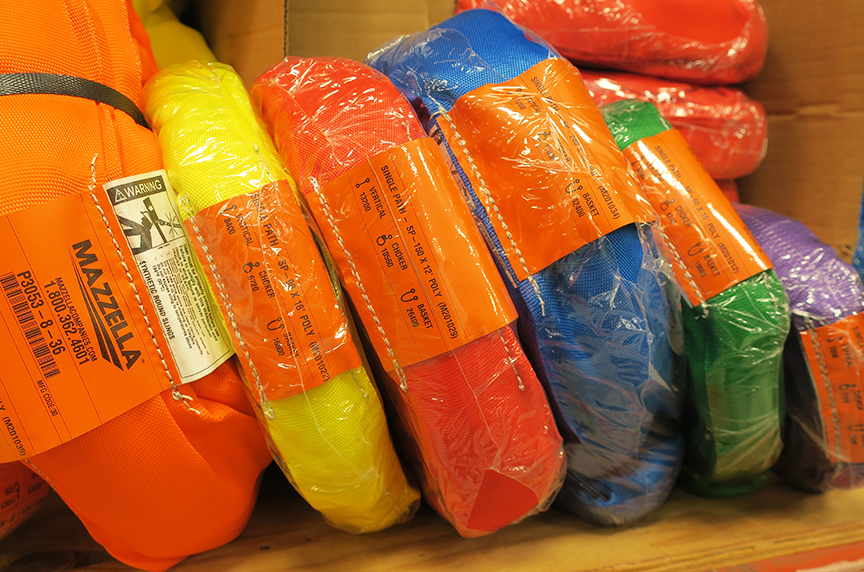
New polyester roundslings, incorporating previously used or welded fittings shall have the fittings proof tested before or after fabrication of the completed sling.*
*The same revisions were made for:
- Alloy Steel Chain Slings
- Wire Rope Slings
- Synthetic Rope Slings
- Synthetic Webbing Slings
- High-Performance Roundslings
In the 2018 edition, the standard read: “Prior to initial use, all polyester roundslings incorporating previously used or welded fittings and all repaired slings shall be proof tested by the sling manufacturer or a qualified person.”
Rigging Practices
The 2021 standard reads: “Slings in contact with edges, corners, protrusions, abrasive surfaces, or connecting hardware shall be protected with a material of sufficient strength, thickness, and construction to prevent damage unless the edges are rounded to a radius as recommended by the sling manufacturer, a qualified person, or in compliance with WSTDA-RS-1HP, Section 4.6.2.”
**The same revisions were made for:
- Alloy Steel Chain Slings
- Wire Rope Slings
- Metal Mesh Slings
- Synthetic Rope Slings
- Synthetic Webbing Slings
- Polyester Roundslings
- High-Performance Roundslings
In the 2018 edition, the standard read: “Slings in contact with edges, corners, protrusions, abrasive surfaces, or connecting hardware shall be protected with a material of sufficient strength, thickness, and construction to prevent damage unless the edges are adequately rounded to a suitable radius in accordance with WSTDA-RS-1, Section 4.6, the sling manufacturer, or a qualified person.”
The acronym WSTDA stands for the Web Sling and Tie Down Association.
What Can Mazzella Do to Help You Stay in Compliance with the ASME B30.9 Slings Standard?
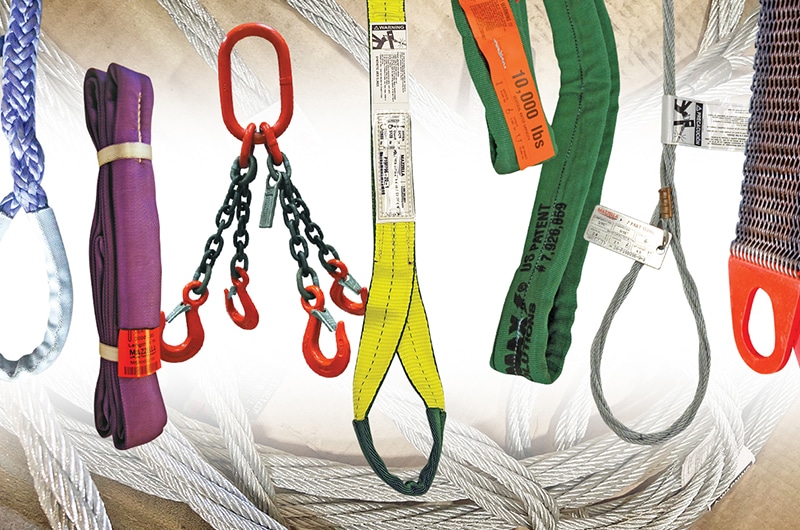
We have more than 65 years of experience in designing and supplying slings, including synthetic, wire rope, and alloy steel chain, for use with all types of cranes.
The Mazzella name is synonymous with quality slings—from the customer preferred Mazzella 7-Part™ wire rope sling to one of the world’s largest synthetic Twin-Path® high-performance slings, we can manufacture the right sling to meet your needs.
Mazzella’s quality slings include chain, wire rope, metal mesh, synthetic flat web, polyester roundslings, cordage, and high-performance roundslings.
We provide wire rope assemblies—both large and small. Also, we manufacture bridge cables, crane cables, steel mill cables and thousands of OEM assemblies.
We can also manufacture assemblies with standard or custom end fittings. Special testing and tolerance requirements are also available.
If you would like to learn more about lifting sling best practices, download our e-book that covers all major lifting sling options out on the market.
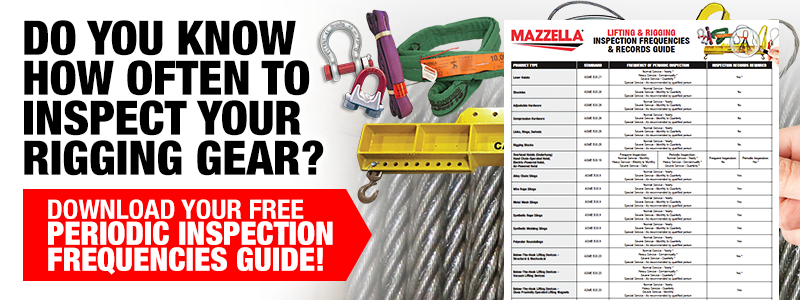

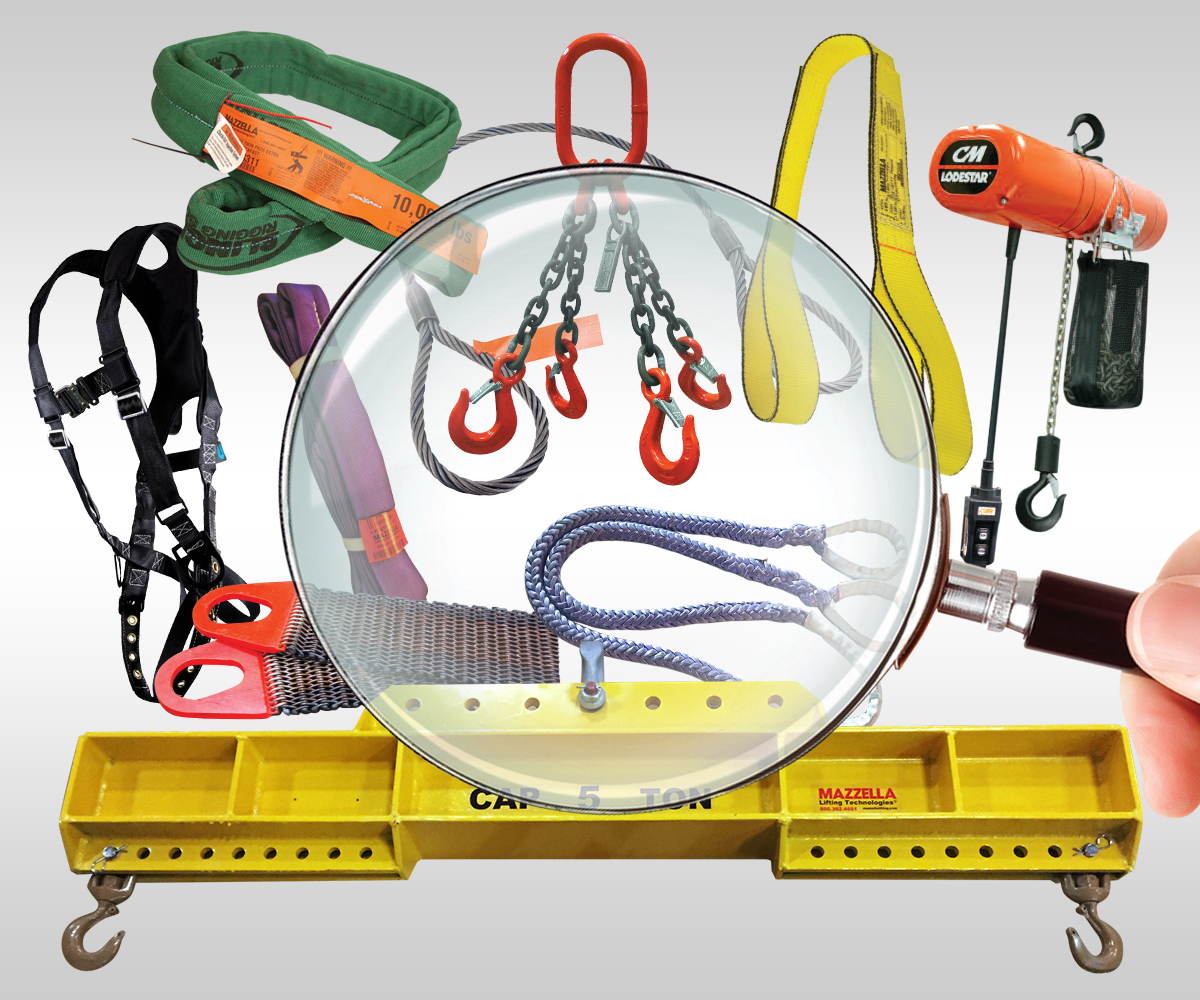
Rigging Inspection Services
OSHA 1910.184, ASME B30.9, B30.20, B30.26, & ANSI Z359 require periodic, documented inspections on slings, rigging hardware, lifting devices, and fall protection every 12 months, at minimum, and monthly to quarterly in more severe service conditions.
Call us at 800.362.4601 or click here if you need inspections for slings, rigging hardware, lifting devices, or fall protection!
Copyright 2022. Mazzella Companies.

